روزنه
آتلیه ۱۱ (اصلان ابراهیمی، گلرخ صدرایی)
راهیافته به مرحله نیمهنهایی نخستین دوره جایزه شایستگی معمار ایرانی (۱۳۹۷)
موقعیت: شیراز، ایران
تاریخ: ۱۳۹۶
مساحت: ۱۳۳۰ مترمربع
وضعیت: ساختهشده
کارفرما: زهرا احترامیان
تیم پروژه: ارسلان ابراهیمی، مرتضی ابراهیمی، مجتبی افرا، وحید زیانی، سروش خوبانی، علیرضا کمالی، پیمان دهقان
عکس: آزاده اوجی، گلرخ صدرایی
ساختمان مسکونی روزنه در یکی از محلههای قدیمی شیراز، در زمینی شمالی ـ جنوبی به عرض ۱۲ متر و طول ۳۰ متر، در انتهای یک کوچه بنبست قرار دارد که از سه طرف مسدود بوده و نورگیری صرفا از سمت جنوب میسر است. به دنبال بررسی امکانات ساختوساز، موانع پیشرو در ضوابط شهرسازی و محدودیتهای اقتصادی محله و همچنین مشاهده بافت ساختمانی متراکم اطراف، طراحی به سمت تأکید بر عناصر شاخصی که در معماری خانههای قدیمی این محدوده وجود داشته و به نحوی با خاطره جمعی مردمانشان پیوند خورده است، پیش رفت تا ساختمان به گونهای حضور مؤثر خود را در بافت شهری اطراف نمایان سازد و تأمینکننده نیازهای ساکنانش باشد.
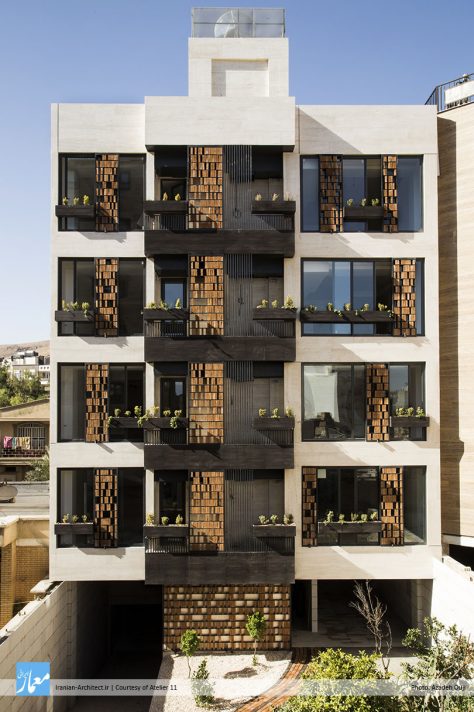
با توجه به اینکه امکان بهرهگیری از دید و نور طبیعی، فقط از ضلع جنوبی ساختمان میسر بود، سازماندهی فضایی به نحوی در نظر گرفته شد که فضاهای عمومی به دلیل استفاده بیشتر در طول روز، در جبهه جنوبی، بخشهای خصوصی در انتهای شمالی و بخشهای خدماتی و دستگاه پله و ارتباط عمودی در میانه بنا قرار گیرند. به دلیل محدودیت مساحت و جلوگیری از پرت فضایی، ایجاد تنوع در طراحی پلانها امکانپذیر نبود و تصمیم بر آن شد که تنوع و اصالتی را که برای هر واحد (خانه) مجزا در نظر داشتیم، در طراحی نما و نمود آن را در داخل دنبال کنیم و نقش جدیدی فراتر از یک پوسته، برای نما ایجاد کنیم و به مثابه یک فضای شاخص، به آن بنگریم، فضایی که نه تنها برای عابرین خارج از ساختمان نمود دارد، بلکه ساکنین ساختمان هم در بیشتر ساعات شبانهروز، از آن بهرهمند میشوند.
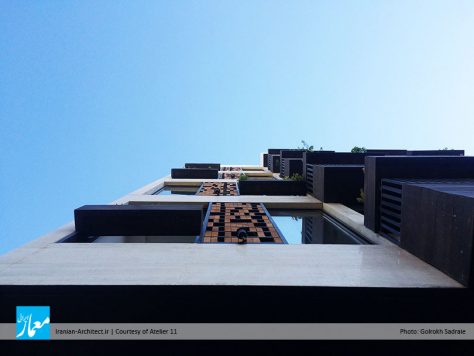
بر اساس ایده فوق، دیوارهای جبهه نما گشوده شد و لایهای جای آن را گرفت که نقشی فراتر از یک پنجره داشته باشد، سطحی وسیع و شفاف که علاوه بر ایجاد دید و منظر گسترده و کشاندن نور مطلوب تا انتهای فضای خانه، درون و بیرون را به هم پیوند بزند و با عمقدادن به نما، آن را از یک پوسته صرف روی بدنه، به یک فضای فیمابین درون و بیرون تبدیل کند. بنابراین فضای بینابین میبایست علاوه بر داشتن ویژگیهای بصری زیباشناختی و کارکردی، یکنواختی و سکون را کنار بزند و هویت خاص خود را در ورای لایههایی از عناصر و سطوح زنده و پویا، به نمایش بکشد و به دور از تکرار، تجربههای فضایی متمایزی را در بیرون و درون ارائه کند تا فضا و منظر داخلی هر یک از خانهها، شخصیت خاص و منحصربهفردی را دارا باشد. برای چنین فضاسازی، عناصر و شاخصههایی نظیر سطوح مدولار و سطوح سبز، در نظر گرفته شد.

سازماندهی سطوح مدولار به عنوان لایه نیمهشفاف و مشبک، با هندسه و الگویی منظم و در عین حال متنوع، بر روی سطوح شفاف زیرین (پنجرهها)، به نحوی طراحی شد که نفوذپذیری لایه شفاف حفظ و مرز میان درون و بیرون محو شود. برای ساخت لایه مدولار، آجر انتخاب شد که هم مصالحی بومی و کاربردی است و هم تکرار و تنوع را به صورت همزمان امکانپذیر میکند. بدینترتیب، چینش آجرها به صورت بافت عمودی در نظر گرفته شد و با استفاده از پیچ، در چهارچوبهای فلزی قرار گرفت.
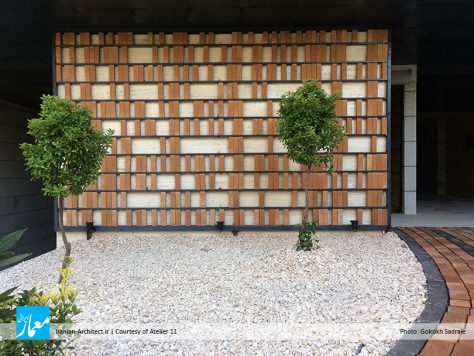
عنصر دوم، لایه سبزی از پوشش گیاهان بود که یادآور درختان و فضای سبز محله و حیاط خانههای قدیمی است و اکنون در تراز دیداری هر طبقه و حدفاصل فضای درون و بیرون قرار گرفته است و کیفیت منظر هر خانه را ارتقا میبخشد. این لایه سبز که از انواع گیاهان بومی و مقاوم انتخاب شد، به نحوی معلق و ناپیوسته، با الگویی، در تعامل با لایه آجربافت قرار گرفت تا ضمن بازسازی و تداعی همان حس حیاط خانههای قدیمی، با گذر زمان رشد کند و چشمانداز سبز و زندهای را از فضای درون به بیرون فراهم آورد و نیاز انسان امروز به ارتباط بیشتر با طبیعت را مرتفع سازد. بدینترتیب، لایه شفاف شیشه، لایه نیمهشفاف آجربافت و لایه سبز گیاهان، نمای ساختمان را به فضایی میانی مبدل کرده و پیوند میان درون و بیرون را امکانپذیر میسازند.
Rozaneh
Atelier 11 (Aslan Ebrahimi, Golrokh Sadraie)
Semi-Finalist of Iranian Architect Merit Award 2018
Location: Shiraz, Iran
Date: 2017
Area: 1,330 sqm
Status: Completed
Client: Zahra Ehteramian
Project Team: Arsalan Ebrahimi, Morteza Ebrahimi, Mojtaba Afra, Vahid Zayyani, Soroush Khoubani, Alireza Kamali, Peyman Dehghan
Photo: Azadeh Ouji, Golrokh Sadraie
Rozaneh residential building is located in an old neighborhood in Shiraz, built in a 354 square meters area. Being surrounded by adjacent building, natural lighting is possible from southern side. After studying project site, design criteria and economical limitations, design team decided to emphasize on architectural features of time-worn buildings in the area. There are good examples of residential community in the vicinity of the project, dating back to 60s and 70s. Simplified forms, large windows, free plans and extreme utilization of yards are the most important features used in this community.
Function
The connection between man and surrounding environment is a dynamic and ever-changing equation which has a lot of economical, political, social and cultural impacts. Mutual impacts of these two are main developer of streets and avenues. Considering these impacts and new-fashioned style of life, we tried to design a home embracing technical and humane values. Spatial experience demand mobility and vision, on the other hand. Physical mobility is bound with time and mental readiness. Experiencing a specified space from inside and outside are different perceptions. Sometimes, an alteration to span of space makes these two a whole new perception. Taking that into account, in Rozaneh, southern façade was presented as a transparent surface which makes inward and outward experience similar to another.
Culture
Culture is a combination of different aspects which shapes a society. Generations inherit these aspects from another and in some cases, reproduce them and even create subculture. In the process, the inheritance does come with a lot of changes, on the other hand. Subcultures are important assets in the process of socializing and justification of different communities’ values. One of these cultures is protection of private domain from the others which is a top priority in local housing. Taking that into account, large windows in southern façade shouldn’t jeopardize resident’s privacy. Brick-made semi-transparent layer creates a frontier between private domain and peripheral environment.
Historical Memory
Historical memory is aggregation of thoughts and emotions through consecutive years and it is shared among people in different communities. Accumulation of these memories does come with numerous perception of past. Pictures, sounds, smells and many other things, even public and private buildings have their own character and at the end, they represent society’s costumes and cultures. Hence that, large windows, simple forms and usage of bricks which are some of local features in surrounding homes, was used to benefit the project.
Form
As indicated previously, culture is affected by many factors. Sometimes, this culture or tradition shows itself as popular styles or a simple manifest. For a good period of time, using brick as a material has become an unquestionable habit in Iran plateau. Different pattern of brickwork in numerous buildings, have created a tradition for using this rich material. Hence that, different semi-transparent layer, made of brick, on southern façade, give us versatility and diversity, and of course, a homage paying to rich history of this adaptive material.
Life
City and urban life is a man-made subject. This important matter has created a connection between artificial city and nature. Environmental issues have made the connection complicated and have raised awareness global wide. On the other hand, human being has always lived along the nature and has been benefited in many different ways. Living in harmony with nature is a necessity to all men, but instead, this need doesn’t get enough attention. In urban life, usage of mutual yard has been decreased and in result, the bond between men and nature is vanishing. Needless to say that such a phenomenon has a negative effect on our life. With some small changes, there is hope to repair this bond. In Rozaneh, we moved our yard to the floors and in result, each unit have its own high garden. This could create a much needed change in the bond between routine life and nature.

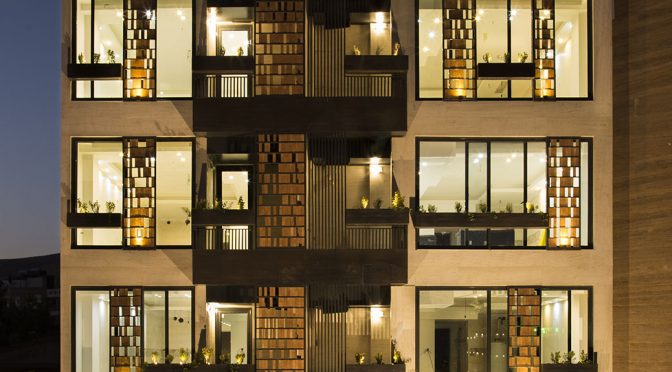
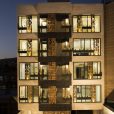
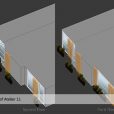
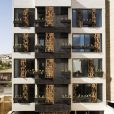
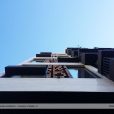
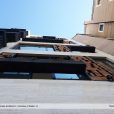
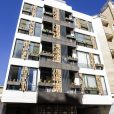
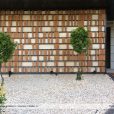
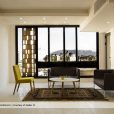
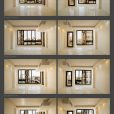
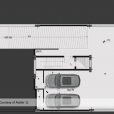
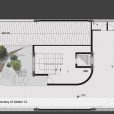
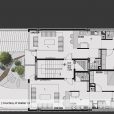
سلام پروژه بسیار خوبیست .شخصا از استفاده سطوح مدولاربسیار لذت بردم با توجه به شرایط اقلیمی ما بسیار هوشمندانه بود.